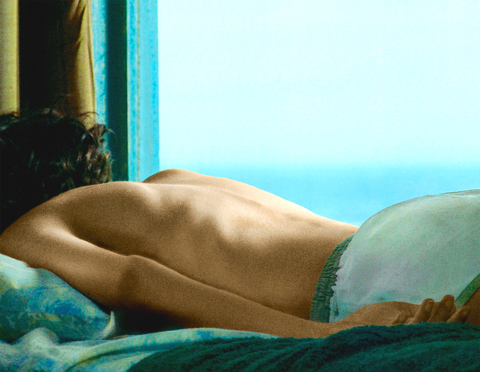How must the world appear to someone who has been treated as an exotic clinical specimen from birth? The moody, surreal XXY explores the world of Alex (Ines Efron), an intersex teenager — born with both male and female sex organs — navigating the treacherous emotional and hormonal rapids of uncertain gender.
The movie, directed by the Argentine filmmaker Lucia Puenzo and based on Sergio Bizzio’s short story Cinismo, is not a clinical case study, though months of research went into its creation. It is a somber, brooding study of Alex and her parents as they face the painful crossroads when adulthood looms. To help their child feel as normal as possible, Alex’s parents have fled Argentina to a remote seaside enclave in Uruguay, where her protective father, Kraken (Ricardo Darin), works as a marine biologist.
But even here, curious teenagers from the fishing village recognize that Alex is different and react with predictable cruelty. There is a near-rape scene in which several boys drag her into the dunes and pull off her pants to inspect her anatomy.

PHOTO COURTESY OF BEST
This overly schematic movie pointedly compares Alex to the marine life under Kraken’s scrutiny: sea turtles, a giant squid and especially clown fish, which exhibit behavior known as sequential hermaphroditism, when the male changes sex and becomes female.
Alex, with the aid of hormonal therapy, has been living as a girl. But with the onset of adolescence, her sexuality has begun to bloom, and for reasons she never explains and perhaps couldn’t put into words, she has recently stopped taking the drugs. Her deepest impulse is to be simply who s/he is.
Although she has developed breasts and has a girl’s voice, we eventually discover that she has a penis (unseen in the movie). Her masculinization may not yet be visible in facial hair and other signs, but her male aggression has already landed her in trouble. As the story begins, she has overreacted to the curiosity of a close male friend about her sexuality and has broken his nose.
Under increasing pressure from her parents to make a final decision about whether to live as a boy or a girl, she is furiously reluctant to choose. And Efron’s thrashing performance conveys Alex’s complicated mixture of ambivalence and defiance.
Visiting from Buenos Aires are a plastic surgeon, Ramiro (German Palacios); his wife, Erika (Carolina Peleritti); and their skinny, buck-toothed 16-year-old son, Alvaro (Martin Piroyansky). The rapidly intensifying relationship between Alex and Alvaro, who is sexually curious but not fully aware of his own gay tendencies, is the movie’s dramatic crux. Will they make love? If so, how? How will they feel afterward?
Their nervous flirtation culminates in a remarkable sex scene that is as confusing to the audience as it is to the characters, who enjoy it despite their anxiety afterward. That scene, and everything leading up to it, evoke a hyperaware sexual limbo in which you scrutinize the masculine and feminine components in the movie’s other characters and recognize the degree to which everyone has both.
If XXY is imagistically too programmatic (a scene of carrots being sliced is typical of its Freudian heavy-handedness) and devoid of humor, it never seems pruriently exploitative. It sustains an unsettling mood of ambiguity that lingers long after the final credits.

The canonical shot of an East Asian city is a night skyline studded with towering apartment and office buildings, bright with neon and plastic signage, a landscape of energy and modernity. Another classic image is the same city seen from above, in which identical apartment towers march across the city, spilling out over nearby geography, like stylized soldiers colonizing new territory in a board game. Densely populated dynamic conurbations of money, technological innovation and convenience, it is hard to see the cities of East Asia as what they truly are: necropolises. Why is this? The East Asian development model, with

This is a deeply unsettling period in Taiwan. Uncertainties are everywhere while everyone waits for a small army of other shoes to drop on nearly every front. During challenging times, interesting political changes can happen, yet all three major political parties are beset with scandals, strife and self-inflicted wounds. As the ruling party, the Democratic Progressive Party (DPP) is held accountable for not only the challenges to the party, but also the nation. Taiwan is geopolitically and economically under threat. Domestically, the administration is under siege by the opposition-controlled legislature and growing discontent with what opponents characterize as arrogant, autocratic

June 16 to June 22 The following flyer appeared on the streets of Hsinchu on June 12, 1895: “Taipei has already fallen to the Japanese barbarians, who have brought great misery to our land and people. We heard that the Japanese occupiers will tax our gardens, our houses, our bodies, and even our chickens, dogs, cows and pigs. They wear their hair wild, carve their teeth, tattoo their foreheads, wear strange clothes and speak a strange language. How can we be ruled by such people?” Posted by civilian militia leader Wu Tang-hsing (吳湯興), it was a call to arms to retake

When Lisa, 20, laces into her ultra-high heels for her shift at a strip club in Ukraine’s Kharkiv, she knows that aside from dancing, she will have to comfort traumatized soldiers. Since Russia’s 2022 invasion, exhausted troops are the main clientele of the Flash Dancers club in the center of the northeastern city, just 20 kilometers from Russian forces. For some customers, it provides an “escape” from the war, said Valerya Zavatska — a 25-year-old law graduate who runs the club with her mother, an ex-dancer. But many are not there just for the show. They “want to talk about what hurts,” she